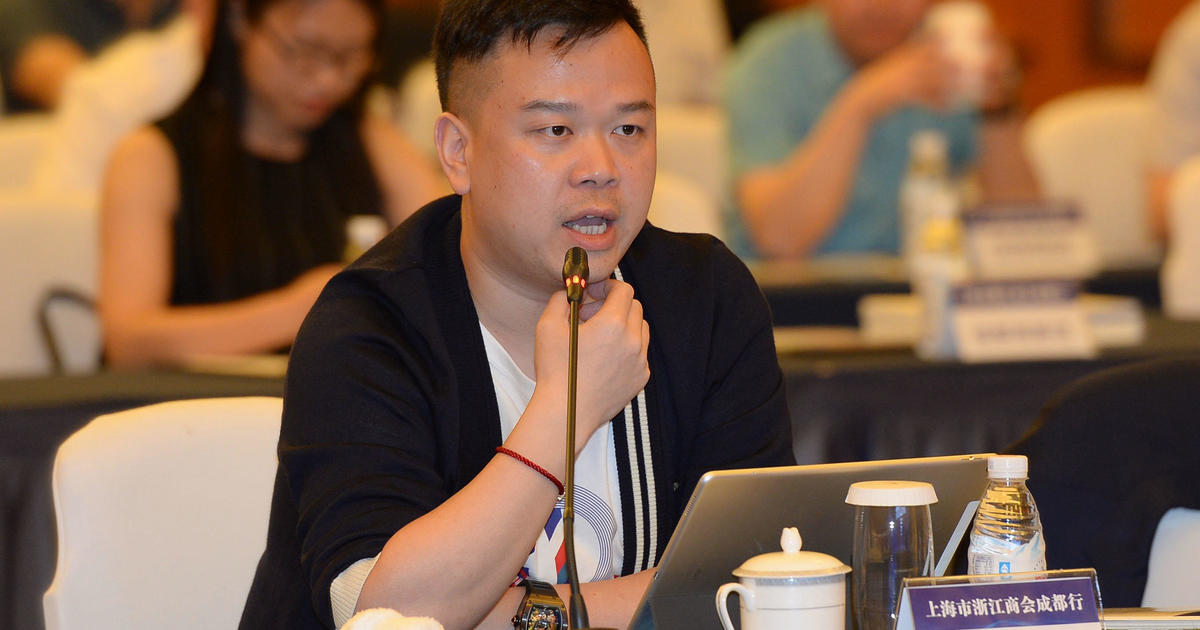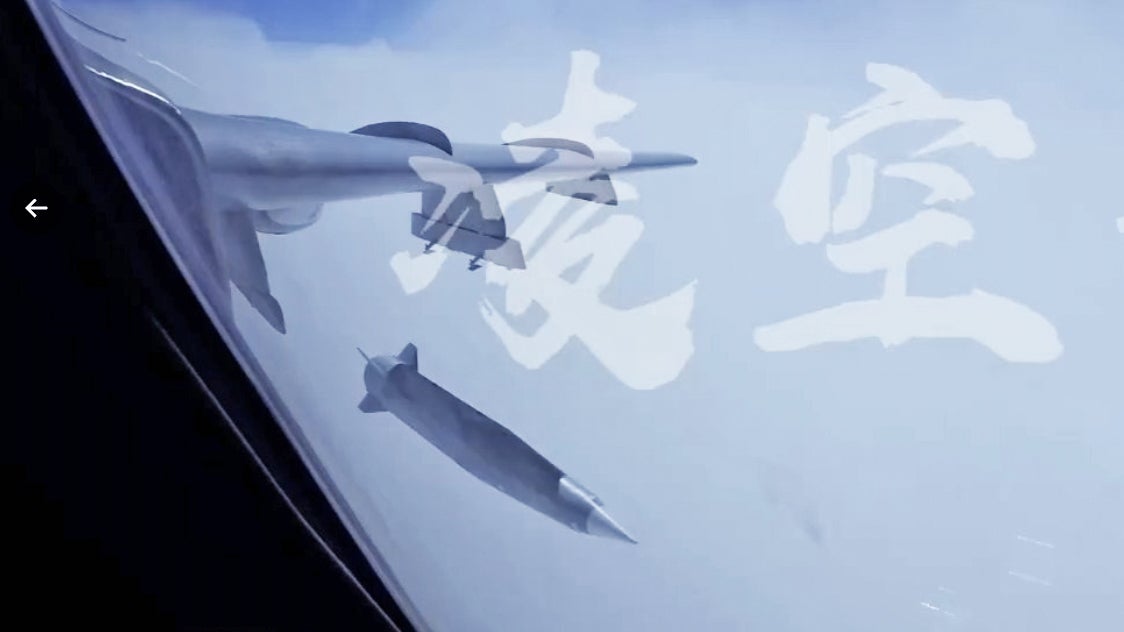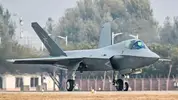Install the app
How to install the app on iOS
Follow along with the video below to see how to install our site as a web app on your home screen.
Note: This feature may not be available in some browsers.
You are using an out of date browser. It may not display this or other websites correctly.
You should upgrade or use an alternative browser.
You should upgrade or use an alternative browser.
Uutisia Kiinasta
- Viestiketjun aloittaja Teräsmies
- Aloitus PVM

Former gaming executive sentenced to death in poisoning of billionaire Netflix producer in China
Xu Yao poisoned the food of company founder Lin Qi in 2020 because of a dispute over the running of the business, the court said.
Crazy story of the week: The tragic incident surrounding the Netflix adaptation of the "Three Body Problem" series is not widely known among its fans. Lin Qi, a visionary and brilliant young billionaire, acquired the rights to the "Three Body Problem" with the ambition of creating various products from it. He enlisted the expertise of Xu Yao, a distinguished lawyer, appointing him CEO to spearhead the business operations, including securing a deal with Netflix—a feat for which Lin compensated Xu with a salary of nearly $3 million. However, Xu's performance did not meet expectations beyond the Netflix agreement, leading Lin to reduce his salary to $750,000 and bring in additional executives to enhance business operations. Xu, retaining his CEO title, was reportedly infuriated by this demotion and further aggravated by not being credited as a producer on the Netflix project.
Driven by revenge and inspired by the TV show "Breaking Bad," Xu meticulously planned Lin's murder. He purchased 160 phones and established a company in Japan to acquire the necessary chemicals for his scheme, testing them on animals. Xu then poisoned Lin and his colleagues, disguising the lethal substances as an advanced probiotic. Lin unsuspectingly consumed it and soon after was hospitalized, where it was immediately apparent he had been poisoned, though the specific toxins were unknown. The police quickly suspected Xu, who, had he disclosed the nature of the poisons (later found to have included exotic substances such as pufferfish poison and mercury and at least three other poisons), could have saved Lin's life. However, he chose not to, ensuring Lin's demise. Just a few days ago, as the show was premiering globally, Xu was finally sentenced to death for the murder of Lin and attempted murder of two other colleagues, who survived but with lifelong injuries.Lin Qi, credited as an executive producer on the Netflix project posthumously, passed away at the age of 39. RIP
rty19
Greatest Leader

China’s H-6K Bomber Seen Firing Air-Launched Ballistic Missile For First Time
A newly released video shows the Chinese air-launched ballistic missile in action, dropped by an H-6K bomber.
Melkosia satuja ne Kiinassakin opettaa:
Solidsnake
Respected Leader
Totta se on, ne on kaikki haudattu tattarisuolleMelkosia satuja ne Kiinassakin opettaa:

BYDit taitavat olla aika tulisia:

 www.iltalehti.fi
www.iltalehti.fi

Sähköautokauppa paloi taas – Jo kymmenes BYD-myymälän tulipalo kolmeen vuoteen
Peräti kymmenen BYD-myymälää on palanut sitten lokakuun 2021. Tämän lisäksi kaksi BYD:ejä kuljettanutta rekkaa on leimahtanut liekkeihin.

Kiina | Neljä amerikkalaista loukkaantui puukkoiskussa Kiinassa
Neljää yhdysvaltalaista opettajaa puukotettiin maanantaina. Kiinan valtio vaikuttaa sensuroineen tietoja tapauksesta sosiaalisesta mediasta.
WardLittell
Majuri

Skandaali Kiinassa: Asevoimien salaisuuksia kaupattiin taskurahalla - Suomenmaa.fi
Kiina valtiollisesta turvallisuudesta vastaava ministeriö kertoi tiistaina eläkeläisen ostanneen luottamuksellisia, sotavoimiin liittyviä asiakirjoja...
Kontrolli pettää ja korruptio jyllää Kiinassakin

Kiina rakentaa Kirgistanin ja Uzbekistanin kanssa rautatien mikä ohittaa Venäjän. Eli Kiina jatkaa Venäjän bylsimistä:
Kyrgyzstan, Uzbekistan and China will build a railway to Europe, bypassing Russia.
Two former Soviet republics in Central Asia - Kyrgyzstan and Uzbekistan - have agreed with China to build a railway to Europe that will bypass Russia.
The agreement on the project, which Beijing, Bishkek and Tashkent have been discussing for 27 years, was signed by the parties on June 6 in Beijing, and construction is due to begin in October.
The 450-500 km long railway will become part of China's global One Belt, One Road initiative.
“Experts note that the annual volume of cargo transportation will reach 15 million tons, and the delivery time of goods to end consumers will be reduced by 7 days. In addition, a modern transit and logistics infrastructure, warehouses and terminals will be created,” said President of Uzbekistan Shavkat Mirziyoyev.
The road will run from Kashgar in China's Xinjiang Uyghur Autonomous Region through Torugart, Makmal and Jalal-Abad in Kyrgyzstan to Andijan in Uzbekistan.
Then the highway will connect with the roads of other Central Asian countries, from where cargo will go to the Caspian Sea, to Turkey and to Europe.
On June 19, the parliament of Kyrgyzstan, through whose territory the main part of the route will pass, ratified an agreement with China and Uzbekistan on the construction of the road.
A joint project company (JPC) will be created to lay the Kyrgyz section of the highway between the countries. China will own 51% of it, and Kyrgyzstan and Uzbekistan will each get 24.5%.
- Reported by the Moscow Times.
Viimeksi muokattu:
Kiviä Kuun pimeältä puolelta:

 www.hs.fi
www.hs.fi

Avaruus | Kuun kääntöpuolelta tuotiin Maahan kaksi kiloa kiviä
Kivet voivat kertoa, miksi Kuun kääntöpuoli on niin erilainen kuin maahan näkyvä puoli. Kivet voivat valottaa myös maapallon varhaista historiaa.
Takatasku
Kersantti
No nytkö ne alkaa kaveeraamaan kuunatsien kanssa?Kiviä Kuun pimeältä puolelta:

Avaruus | Kuun kääntöpuolelta tuotiin Maahan kaksi kiloa kiviä
Kivet voivat kertoa, miksi Kuun kääntöpuoli on niin erilainen kuin maahan näkyvä puoli. Kivet voivat valottaa myös maapallon varhaista historiaa.www.hs.fi
WardLittell
Majuri

Hurja huhu Xi Jinpingistä leviää Kiinassa
Huhujen mukaan maan presidentti Xi Jinping olisi saanut aivoinfarktin.
Huhuja, huhuja... Jos sittenkin pitää paikkansa, todella suuria globaaleja vaikutuksia

Kiina rakensi kopioita F-35- ja F-22-hävittäjistä: Räjähdysjäljet viittaavat koneita käytettävän harjoituskohteina
Satelliittikuvista paljastuu, että Kiina on ilmeisesti rakentanut kopioita Yhdysvaltain hävittäjistä.
Ei näitä Venäjän vanhoja laivoja haluta hävittää missään:
Ehkä jo tuossa vaiheessa?
Ehkä jo tuossa vaiheessa?
Kiinan talous yskii:

 www.hs.fi
www.hs.fi

Kiina | Maailman toiseksi suurin talousmahti on deflaation partaalla – pörssikurssit laskivat jo
Kiinan pörssikurssit ovat laskeneet jo liki tammikuun 2019 tasolle.
Mannertenvälistä pullistelua:

 www.iltalehti.fi
www.iltalehti.fi

Kiina laukaisi aseen, jollaista ei ole testannut vuosikymmeniin: Varoitti Ranskaa
Yhdysvaltain puolustusministeriö arvelee Kiinan tuplaavan sen ydinaseiden määrän vuoteen 2030 mennessä.
Ydinsukellusvene uponnut viime keväänä. Artikkeli valitettavasti maksumuurin takana. Toisilla X-tileillä kerrotaan, että olisi uponnut satamassa.
Edit. Linkin vaihto, jossa enemmän sisältöä.
Edit. Linkin vaihto, jossa enemmän sisältöä.
Viimeksi muokattu:
Kiinalla ja Myanmarilla jotain rajakahakkaa. Tuliko tää ihan puskista?
taantumu
Ylipäällikkö
Kiina esittelee lentonäytöksessä virallisesti Shenyang J-35A:n. Alunperin FC-31 nimellä kulkenut kone oli Shenyangin yksityisesti suunnittelema ja teki ensilennon 2012, nyt on ilmeisesti saatu Kansanarmeija hyväksymään kone. Jos kone tulee käyttöön on Kiina toinen maa USA:n jälkeen jolla on kaksi häivehävittäjämallia käytössä. Koneesta on myös tukialusprototyyppi.

https://edition.cnn.com/2024/11/05/china/china-stealth-fighter-jet-j-35a-intl-hnk/index.html
China to unveil J-35A stealth fighter jet as air force aims to match US aerial power
China’s air force is set to officially debut its new stealth fighter jet, the J-35A, giving observers the first look at a highly anticipated asset that adds to the country’s fast growing military capabilities.
The fighter, an image of which was released during an air force press conference Tuesday, will appear at an air show in the southern city of Zhuhai next week, officials said.
The development of the jet is widely seen as part of Beijing’s bid to match the United States’ stealth fighter capabilities – as it pushes to modernize its armed forces and assert its military might in Asia.
The J-35A is “designed mainly for air combat operations and can also conduct air-to-surface attack,” according to a report from a Chinese military-affiliated outlet.
If the aircraft is commissioned into operation, it would make China the second country after the US to have two types of stealth fighter jets, according to experts cited by Chinese state media.
China’s J-20 stealth fighter entered service in 2017, officials said at the time.
Stealth fighters are those that are designed to evade radar and other monitoring to conduct missions without being detected or intercepted.
The J-35 is likely to be designed as a series and may also be used as carrier-based aircraft in the future, Chinese military expert Li Li told state broadcaster CCTV. This would “greatly improve the overall strength of China’s sea and air combat,” she said.
The fighter’s debut follows what analysts at Janes global open-source intelligence firm have described as China’s “bolstering” of its forward theater commands with additional J-20s.
The People’s Liberation Army (PLA) Air Force between July 2023 and this June inducted more than 70 J-20s, bringing the force’s operational fleet up to approximately 195, according to a Janes report published earlier this year.
It’s not clear when the new J-35A fighter would be commissioned into military use and where the fighters would be deployed.
The sparse details released about the fighter so far also make it difficult to compare with other stealth fighters, including the US’ F-22 and F-35.
Carl Schuster, a former director of operations at the US Pacific Command’s Joint Intelligence Center, said the J-35A, which has been in development for more than 10 years, was likely intended for the PLA Navy.
“The J-35 made its maiden flight in 2021, but as a derivative of an earlier prototype, it may be ready for production by early next year,” Schuster said, adding that the J-35A model likely improved on that earlier design with more powerful engines.
China’s development of stealth fighters has for years been dogged by accusations that it stole crucial stealth fighter technology from the US.
Beijing has vigorously denied those claims, which came to light with the 2015 publication by German magazine Der Spiegel of documents purportedly from US National Security Agency leaker Edward Snowden.
The J-35A is a “new type of stealth fighter jet independently developed by Aviation Industry Corporation of China (AVIC),” a Chinese military affiliated outlet said this week.
China’s J-35A is not the only technology that will be on show for the first time at next week’s airshow, which takes place in Zhuhai from November 12 to 17.
The H-19 surface-to-air missile system and new “reconnaissance and strike” UAVs will also have their public debut, Col. Niu Wenbo of the air force’s equipment department said Tuesday.
CCTV has also reported that Russia’s Su-57 stealth fighter would join the air show for the first time, among equipment from 49 different countries and regions that would be represented this year.

https://edition.cnn.com/2024/11/05/china/china-stealth-fighter-jet-j-35a-intl-hnk/index.html
